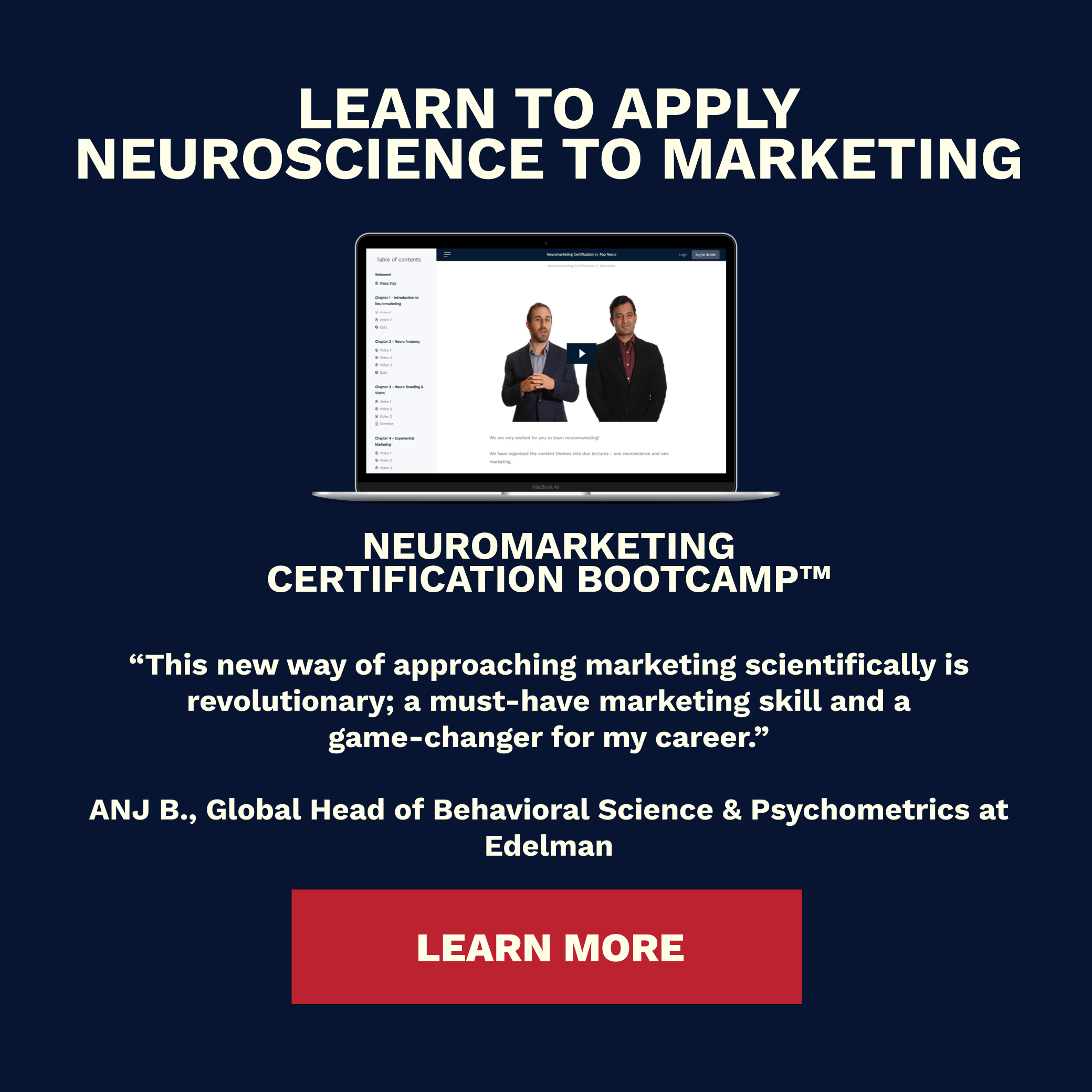Why Every Marketer Needs to Know the Neuroscience of Attention

Photo by note thanum, Unsplash
Attention is currency. Attention is a business model. But what is attention, really? And what determines what consumers pay attention to? While many factors are at play, marketers can benefit from understanding the neuroscience of attention which ultimately underpins advertising, branding, and product marketing.
The world is a complex stream of never-ending data, and the brain cannot pay attention to it all. So to deal with this sheer volume of information, the brain uses shortcuts. The most significant shortcut of all is anchoring. Anchors help direct your attention to what’s most likely to be important and away from what’s likely to be unimportant. Anchors are everywhere, from the images you see to the sounds you hear.
A plain white spot is most visible against a black surface. This is an easy example of anchoring. UX designers might be quick to identify the black surface provides a contrast. They would be correct, but contrasts go deeper than a paintbrush. Contrasts are a manifestation of your brain’s use of the anchoring shortcut. At a superficial visual level, the brain is biased to pay greater attention to high-contrast objects—white against black, yellow against red, and so forth.
Lines and contours can create high contrast as well. There are distinct systems in the brain that prioritize high-contrast information. Studies with children as young as just a few days have demonstrated a consistent preference for high-contrast stimuli. And adult-eye-tracking research has found that high-contrast areas can predict where people will look with 85 per cent accuracy.
Think of a person who grew up in a metropolis. She’s accustomed to street noises at night: cars driving, people walking, even the occasional alarm going off (or not-so-occasional in San Francisco). This constant, reliable level of city noise is her aural anchor. If she goes camping out in the countryside for the first time, the silence at night could be deafening. She will notice it because it’s different from the noisy anchor (or contrast) from the metropolis. The opposite is true for someone brought up in the country. Silent nights are his anchor, making apparent the nighttime noise in the city that he had learned to ignore.
The impetus for paying attention to something generally comes from two places: inside or outside of us. The fancy words for these sources are endogenous and exogenous, respectively. Endogenous attention is what you use when you shop with a grocery list in hand. Your guiding goal is to find the items on the list; what you are paying attention to is directed internally (the endo in endogenous means “coming from within”).
But imagine you’re visiting the mall to kill time and browse around. In this case, you don’t have an internal goal. Instead, what you pay attention to are generally directed externally by whatever catches your eye. This is exogenous attention, the type of attention that is passive, transient, automatic, and stimulus-driven process. Highly salient cues in the consumers’ environment or context will earn exogenous attention.
High contrast and saliency are the two variables for marketers to play with. Marketers can influence exogenous attention by using the anchors in the environment. Some easy examples are TV commercials that play at a higher volume than the televised content and billboards, which come in bright colors to stand out against the mundane hues of the landscape. Driving exogenous attention comes down to tapping into what consumers naturally pay attention to - contrast and change. The brain’s perception of the contrasts depends on its anchors. The tricky part is consumers are rarely aware of the anchors themselves, let alone the impact anchors have on their behavior.
The key takeaway is the brain is always looking for a place to anchor. Therefore, marketers should understand the implications of that and strategize accordingly.
P.S. - Attention might be a currency but it is also the fertile ground in which memories can be encoded (which is an entirely different discussion altogether). If you’d like to learn how to apply neuroscience to marketing at a more tactical level, take a look at Pop Neuro’s Neuromarketing Certification.
Written by Prince Ghuman
What’s Next?
The neuroscience of color has important implications for a wide range of fields, from design and marketing to health and wellbeing.
LeBron James' breaking of Kareem's record and the following interpretations illustrate the complex interplay between sports statistics and the psychology of statistics.
Memory is your brain’s attempt at connecting you to the past. Learn how memory can improve marketing!
This article will cover what the two consumer behavior motivations that marketers must know.
Learn a simply yet effective marketing strategy as it relates to system 1 & the law of least mental effort.
Moms know a thing or two about the psychology of guilt
Uncover the connection between the neuroscience of memory and emotion and learn how marketing can use it as a memory-booster.
Your brain is a relentless pattern-seeking machine. And these patterns affect consumer behavior in fascinating ways for marketers to note.
Since the brain has declared vision as the VIP amongst senses, you’ll never go wrong by finding more ways to be visual in your marketing.
Everything in marketing comes down to the brain, yet marketers don’t study brains.
The carrot needs to be dangling continuously.
Which of the following hits you harder: losing something or gaining something?
What if I were to tell you that you and everyone else you know is blind AND are entirely unaware of the blindness?
Attention is currency. Attention is a business model. But what is attention, really?
Find out the 3 crucial influences of a company revealing the gender pay gap on consumer behavior.
In 2003, everything changed with “1000 songs in your pocket”.
Find out why smell is to memories what a summary is to books.
What’s the best marketing strategy to make consumers more sustainable?
Can fashion be inclusive? Is fashion truly diverse?
How does the visual salience of credit card features affect consumer decision-making?
The habit of eating the same food for breakfast is pretty common. Why?
Associations are so deeply ingrained in us that we’ve devised “relationships” with definite expiration dates.
The constant chase of happiness in travel has a name. And we’ve been walking over it since.
Why do marketers project personal preferences onto consumers?
Could technology and virtual crowds be one of the NBA's most important plays?
Find out why minimalism is a life-long journey, not a destination.
Why are we so curious about fashion outfits we’ll never wear?
Customers become territorial as they “claim” spaces to work. How and why does this happen?

































Dive into the fascinating intersection of psychology and marketing and how to use psychological biases in marketing strategy.